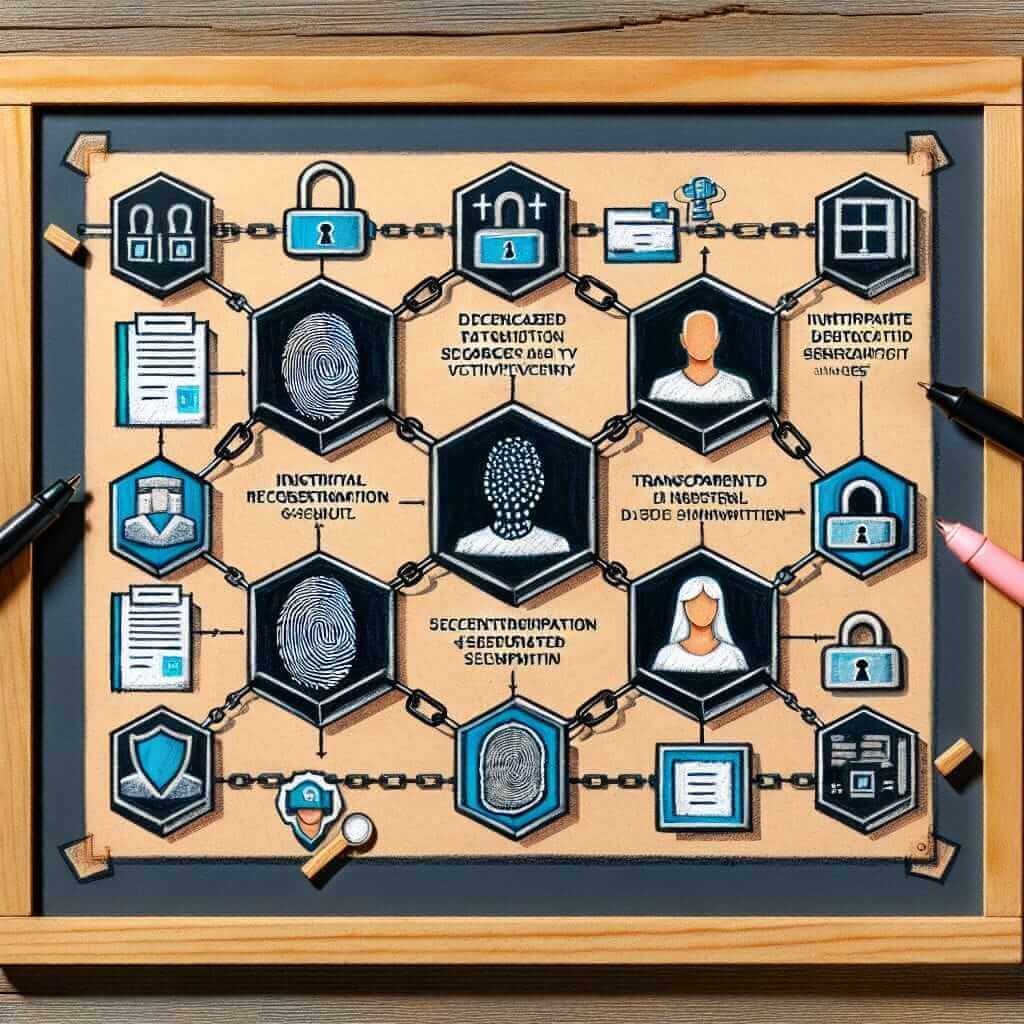The IELTS Reading exam requires candidates to read passages and answer various question types such as Multiple Choice, True/False/Not Given, and Matching Information. A common theme that has surfaced in recent exams is technological advancements, particularly blockchain technology. This topic is not only pertinent due to its growing significance but also because it offers a glimpse into future trends. In this article, we delve deep into how blockchain technology is being used in digital identity verification, to provide a realistic practice passage for the IELTS Reading section. Additionally, we analyze past trends and predict the potential recurrence of this subject in upcoming exams.
IELTS Reading Passage on Blockchain in Digital Identity Verification
Text Difficulty Level: Medium
Reading Passage
Blockchain technology, initially conceived for cryptocurrencies, has extended its applicability into various domains, one of which is digital identity verification. The traditional methods of identity verification are often fraught with inefficiencies, security issues, and privacy concerns. Here, blockchain technology offers a transformative solution.
What is Blockchain Technology?
At its core, blockchain is a decentralized digital ledger that records transactions across multiple computers so that the record cannot be altered retroactively. This immutability and transparency are what make blockchain particularly suitable for identity verification.
Identity Verification Challenges
Traditional identity verification processes typically require central authorities like banks or government agencies to validate an individual’s identity. These processes often involve multiple steps, making them time-consuming and susceptible to human error. Moreover, centralized repositories are attractive targets for cyber-attacks, increasing the risk of identity theft.

Blockchain-based Digital Identity
With blockchain, digital identities are created and managed through decentralized systems. These systems enable individuals to have more control over their personal data. For instance, once identity-related information is stored on the blockchain, it cannot be tampered with or accessed without authorization. This greatly reduces the risk of fraud and unauthorized access.
Benefits and Real-world Applications
The primary benefit of using blockchain for identity verification is enhanced security. Each piece of identity data entered into the blockchain is encrypted and linked to the previous data entry, making unauthorized manipulation nearly impossible. Besides security, the process is also more efficient. For instance, companies like IBM and Microsoft are exploring blockchain for authentication purposes, thereby significantly reducing the time and resources spent on verifying identities.
Future Prospects
The future of blockchain in identity verification looks promising, with increased integration expected in various sectors, including banking, healthcare, and online services. The technology could revolutionize how we prove and protect our identities, making transactions more secure and efficient.
IELTS Reading Question Types
Here, we present a sample IELTS Reading test based on the passage above:
Multiple Choice Questions
-
What does blockchain primarily offer in the context of identity verification?
A. Cost efficiency
B. Fast processing times
C. Enhanced security
D. Simplified data entry -
Which companies are mentioned as exploring blockchain for authentication?
A. Google and Apple
B. IBM and Microsoft
C. Amazon and Facebook
D. Oracle and SAP
True/False/Not Given Questions
- Traditional identity verification methods are immune to cyber-attacks.
- Blockchain technology was originally developed for digital payments.
Matching Information
-
Match the following terms to their descriptions:
A. Decentralized ledger
B. Identity theft
C. Authenticationi. Verification of one’s identity.
ii. Method of recording transactions across multiple computers.
iii. Unauthorized use of someone else’s identity information.
Answer Keys and Explanations
- C. Enhanced security – This is explicitly stated in the passage.
- B. IBM and Microsoft – The passage notes these companies’ exploration into blockchain.
- False – Traditional methods are stated as susceptible to cyber-attacks.
- True – Blockchain was initially conceived for cryptocurrencies.
-
- A. ii (Decentralized ledger: Method of recording transactions across multiple computers)
- B. iii (Identity theft: Unauthorized use of someone else’s identity information)
- C. i (Authentication: Verification of one’s identity)
Common Mistakes in IELTS Reading
Students often misinterpret keywords or fail to understand the underlying context, leading to incorrect answers. To avoid this, focus on:
- Close Reading: Pay attention to every word.
- Keyword Matching: Ensure that you identify and understand keywords.
- Skimming and Scanning: Quickly identify key points and relevant information.
Vocabulary Enrichment
Here are some critical terms from the passage:
- Immutable /ɪˈmjuːtəbl/ (adj): Unchangeable over time.
- Decentralized /ˌdiːsenˈtrælaɪzd/ (adj): Distributed away from a central point.
- Encryption /ɪnˈkrɪpʃn/ (noun): The process of converting information into code.
- Cyber-attack /ˈsaɪbər əˌtæk/ (noun): An attempt to damage or disrupt computer systems.
Key Grammar Points
- Passive Voice: Often used in scientific texts, e.g., “Information is stored…”
- Relative Clauses: Which provides additional information, e.g., “Companies like IBM and Microsoft, which are exploring blockchain…”
Advice for IELTS Reading Practice
To excel in the IELTS Reading section:
- Practice Regularly: Consistency is key. Try to read diverse articles and journals.
- Time Management: Familiarize yourself with the time constraints and practice completing tasks within the allotted time.
- Mock Tests: Conduct regular mock tests to simulate the actual exam conditions.
Stay updated with technological advancements and practice reading complex texts to enhance your vocabulary and comprehension skills.